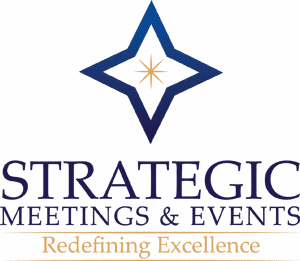Corporate Event Budgets
Do It Like A Pro
By Christy Lamagna, CMP, CMM, CTSM
This six-part series looks at personal and professional spending for planners involving corporate event budgets. If you need to catch up, please follow these links.
Week 1: A planner’s friend: Tracking spend
Week 2: Where does all the money go?
Week 3: Mindfulness is the key to smart money
Week 4: Show me the money!
This week: Corporate event budgets
Corporate Event Budgets
Feeling better about your personal finances but still apprehensive about tackling line item budgets for your next program? Truth is, managing your event finances is not more complicated; it’s just a little different. Half the battle is believing you can do it and not letting the idea overwhelm you. If you conquer your fear, you’ll have a new skill, more confidence and that awful feeling in your gut will be banished from the budgeting area of your life.
Event budgets come in all shapes and sizes, but they all follow some basic principles. The key is using the information you have and using some simple math to fill in the gaps. No matter what you’re planning, your event likely falls into one of these categories:
- Events in the next year with an internal audience.
- Events more than one year out with an internal audience.
- Events in the next year with an external audience.
- Events more than one year out with an external audience.
- International events in the next year with an internal audience.
- International events in the next year with an external audience.
To make sure we’re all clear, let’s define some terms. An internal audience is one that you can reasonably predict. It’s your team. An external audience is the general public, over whom you have little to no control. Internal audiences are likely obligated to attend the event. External audiences are not.

If you don’t have a budget template, see if someone in your office has one from a past event. Can’t find one? There are lots of spots on the Internet that offer them. Email me at christy.lamagna@stratetic.events for a basic template you can customize.
Basic rules of budgeting apply regardless of audience type. There are two types of expenses: fixed and per head. An example of a fixed cost is venue rental. Generally speaking, the venue rental remains static no matter how many people attend. Identifying your fixed costs and plugging them in is an easy place to start.
Key things to keep in mind: Service charges, sales and occupancy taxes, and resort fees are rarely included in the quoted prices. Make sure you know all additional items you must factor into your budget. Some hotels have union contracts requiring guests to pay a porterage fee both at check-in and check-out whether they use bellmen or not. Others charge the fee when a group of 10 or more checks in at one time. Asking questions now avoids surprises later. A real pro negotiates as many of the fees out of the contract as possible before signing with the property.
Knowing what to track is half the battle. Below are key headers I include in my budgets. Keeping figures from the previous year visible is useful in gauging this year’s actuals. Capturing cost savings will alert you to one-time-only deals you were able to negotiate but cannot count on for future years.
Historical data is invaluable as you populate your budget. The more information you capture, the closer you can get to your target this year. Do your guests skip breakfast and hit the morning break hard? Do they drink beer and wine or mostly mixed drinks? Are they coffee fiends, or do they stick to cold drinks? Knowing this will allow you to set your guarantees, plan your menus and schedule your meal times with more accuracy, thereby using your dollars effectively.
What happens if you don’t have historical data to rely on? How do you think of all the potential costs before they happen? That’s what we’ll talk about next week.
Tags: Corporate Event Budgets Do It Like A Pro, Budgets, Budgeting, Event Planning, Event Budgets, Event Planners, Strategic Planners, Strategic Events, Plan Your Meetings





